Adelaide Hills Gold
POSTED ON 21/11/2009Thank you, Paul (Henry), for the introduction. At the London Wine Trade Fair this year, I was being introduced as the speaker at a seminar on the wines of South West France by a Frenchman, who was asked to introduce me as Anthony Rose of the Independent and thewinegang.com. He promptly informed the assembled audience that they were about to hear from 'Anthony Rose of ze Independent and ze gangbang.com'. I can't speak for the quality of the information on the gangbang.com, but I can vouch for the wine website, the winegang.com I share with four other British writers.
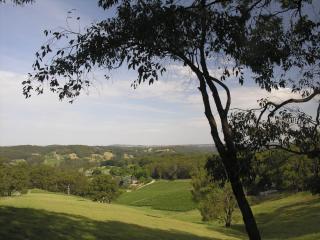 In the Hills
In the Hills
So hello everyone, it’s wonderful to be back in South Australia. First of all I would like to thank a few people for bringing me here to the Adelaide Hills in particular and to lovely Mount Lofty House. Thanks first of all to Tash Mooney of course, my first point of contact, who knows and understands my strange weakness for the delights of both Marmite and Vegemite, to Darryl Caitlin, and to Marty Edwards and Katie, whose bright idea I think this was, in part at least. And not least to the chair of the show, Louisa Rose (who I understand was not unamused at the fact that in the latest issue of The World of Fine Wine Magazine, she was pictured alongside Robert Hill-Smith with the caption underneath stating: Robert Hill-Smith and his wife Annabel). I would like to thank the Adelaide Hills Wine Show committee in general and Denise in particular for their time and all their help with my arrangements here, and the hard-working judges, associates, coffee makers, sconemakers and all the other helpers I've had the pleasure of spending the past few days with. And finally, thanks, of course, to the sponsors.
 Slumming it at Mount Lofty House
Slumming it at Mount Lofty House
I must admit I was a little surprised at being honoured with an invitation to judge here because I thought that the Aussies only loved the Poms when you beat us at cricket. Yes, I’ve noticed how welcome a Pom is so often in Australia in the aftermath of yet another rubbish performance by us against the Baggie Greens. And how, vice versa, that the only thing worse than a whingeing Pom is a gloating Pom. And yet having seen Ricky Ponting booed all summer long in England, I was there at The Oval to watch him receive the warmest reception I’ve ever seen and heard for an Australian captain in London after his run out by Freddie Flintoff. Yes, beating the Aussies suddenly made us all feel that much more friendly to everything and everyone Australian. And let’s face it in the current economic and trading climate, not to mention the strength of the Australian dollar against the £, that can be no bad thing.
I am here on the 20th anniversary of my first ever Australian wine show thanks to having met Len Evans during the Qantas Cup wine tasting between Australia and California in Napa Valley in 1988. Ever the generous spirit, he invited me, along with Oz Clarke, to be one of the judges at the Canberra Show the following year. I’ll always remember that first day in Australia almost 20 years ago to the day. It was at Edgar Reek’s house, the man who rears peacocks. Edgar had slaughtered and roasted a peacock and Len and others had brought all sorts of goodies up from their cellars. At one point he turned to me as I was sipping a red and said ‘How are you getting on, young Rose? Roast peacock and Château Latour 1959. Not bad for a first day in Australia, eh?'. He was right. And it also demonstrated that for all the apparent anti-Pom undercurrent of feeling, there was, and always has been, a residual respect for the opinions of people from a country, which, not being a wine-producer (as such), has pretty catholic tastes when it comes to its wines.
 Tash Mooney
Tash Mooney
Of course at the time Australia was about to embark on the greatest wine adventure of its life, becoming in the historical blinking of an eye, number one wine importer to the UK ahead of France, rising from a value of AUD 260 million to AUD 2.7 billion over the past 15 years. Who could have predicted that in 1989? Not I for one. And of course Australia has had enormous success in the UK, so was it not almost inevitable that at some point or another, the so-called tall poppy syndrome would kick in? It reminds me of the story about George Best, one of our greatest ever footballers, who was as almost as dashing off the field of play as he was on it. A hotel maid knocked on the door of his room one morning and when he didn’t answer, opened the door. There lying fast asleep on the bed was a semi-naked George Best with a scantily-clad blonde on either side, an empty bottle of champagne and £50,000 in cash festooned across the sheets. ‘Where did it all go wrong, Sir?, she asked. Just about any other country in the world would kill to have the sort of success Australia has had. Put another way, which many of us will appreciate, the better the party, the worse the hangover.
 In the trees outside Barratt
In the trees outside Barratt
Meanwhile I was about to embark on my own personal adventure with Australia. 10 years ago and 10 years after that first baptism of Australian wine, I was invited over here to taste for the Rewards of Patience tasting, which Penfolds holds every five or so years. It was a great privilege to be able to taste all those amazing wines, all the way back to the 1955 Grange. Something else caught my eye too. I was being snapped by a young photographer working for Southlight with Milton Wordley, who was covering the event. On the last night here, ever the romantic, I asked her out for a Coopers ale, and the following year I returned to Australia and asked her father for her hand. He did put me through the test first of tailing lambs but then said 'you've taken everything else, mate, so you might as well have that too' and she now lives with me in London working as a wine photographer and personal trainer. I digress a bit only really to make the point that while I have a very strong attachment, both personal and professional to Australia and Australian wine (making me Aussified, rather than ossified I trust), hopefully it's not at the expense of blinding me to the realities of Australia's position as a wine producer in the UK and elsewhere.
This isn’t the time or place to go in depth into the pluses and minuses of the Australian wine industry or come up with instant solutions even if that were possible. I am indebted to Andrew Jefford for the important talk he gave 10 days ago at the National Wine Centre in Adelaide at the end of the Wine 2030 Research Network's 'Blue Sky Day'. Because Andrew stated more articulately than I ever could just what so many in the UK feel about the industry. After having spent getting on for a year here visiting regions and producers as part of the research he’s doing for a book on Australian terroir, Andrew is more up to date and better qualified than I to give an objective account of the positives and the downsides of Australian wine. And many people I've spoken to since I've been here have admitted, some grudgingly, others less so, that at the heart of many of the points Andrew has made, there is more than a grain of truth.
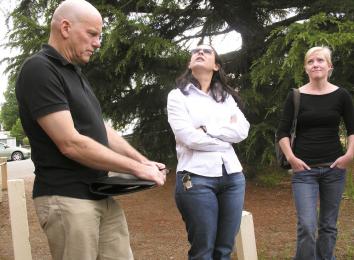 Louisa Rose seeks divine inspiration
Louisa Rose seeks divine inspiration
One of the interesting things about his deliberately provocative speech is that it was entitled Falling in Love Again. This is significant because those who don’t know him that well may have assumed that Andrew was somehow the devil in spectacles with a Pommie accent. He has certainly been portrayed as such due to his outspoken criticism of some of the techniques applied in Australian winemaking which he believes detract from wine's natural balance and sense of place. Yes, I know, Europe in general and France in particular, does all sorts of things that can be regarded as unnatural too. Nor does it have the monopoly on terroir it sometimes likes to think it has. Whether or not you agree with what he says, his speech, all 22 pages of it, is worthy of being read and discussed because if nothing else it will hopefully provoke thought and perhaps even some action.
If I were to pick out one element of this talk, it's not his criticisms of winemaking techniques I'd like to focus on but the image of Australian wine in the UK. It's undoubtedly true that one of the reasons Australia is suffering in the UK today is because of a widespread view by so many UK consumers, dictated by the domination of the offer from the supermarkets, that Australian wine doesn't extend beyond the 86% of mostly commodity branded bottled sunshine made by the 16 biggest wine companies in Australia. As Andrew says, 'Nothing works well forever and Brand Australia is faceless and formless. It’s beginning to morph from asset to liability'. Yes indeed, it's time for Australian wine to wake up to the fact that the negative image based on Australia simply as a mass market producer of boring brands is unjustified and to do something about it.
 Oakbank Soldiers' Memorial Hall
Oakbank Soldiers' Memorial Hall
The recently announced First Family of 12 project for instance, with 12 top Australian families getting together, is part of an initiative needed to help give Australian wine back a human, less corporate face. Australia needs its producers to get back out there and combat that corporate image by explaining and putting wines in front of people to show, in the immortal words of L'Oreal, that they're worth it. Yes, you may say with some justification that economically, based on return per case, the UK market may not make sense, but I think a simple bean counter attitude is in the long-run going to be short-sighted and self-defeating. Not only is the UK a market that shows you're serious about exporting, but the UK too is developing and changing, with a vibrantly healthy growing market of independent wine merchants, one of the most respected restaurant and gastropub scenes in the world and wine website-savvy consumers blogging, twittering and attending hugely popular consumer events. The Wine Gang held its first such one at Vinopolis two weeks ago, to which Louisa Rose came along and saw for herself the value of putting your wines in front of 500 interested, knowledgeable wine consumers in search of quality and variety.
In that context, it's worth noting that there was a story on the net only this morning in which Majestic Wine is saying that fine wine sales rose 14 per cent in the first six months of the financial year, while Oddbins, which has had its problems of late, was also saying that its performance had improved since it had dropped cheap branded wines in favour of higher quality wines. Its MD Simon Baile said he believed that under its previous owner, the French group Castel, Oddbins was drawn into a dogfight with supermarkets at the lower end of the market, stating: 'The more the Baile family gets back into the business, the more I see the potential. It’s enormous'.
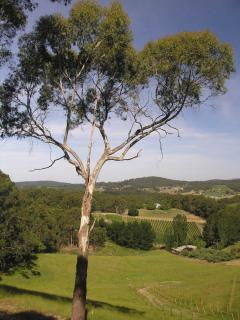 And so to the Hills
And so to the Hills
Before leaving the UK, I should say that the favourable results in the Australian section of the Decanter World Wine Awards this year showed the Adelaide Hills in a positive light. And so to the Hills. Those impressions were confirmed by this week's judging. The whites demonstrated that there is indeed gold in them thar hills and it's colour is chardonnay. It was certainly the high point (we gave a hatful of golds) with a fascinating diversity of style within the category. You only have to look for instance at, say, a Penfolds Bin Chardonnay, a Shaw & Smith and a Petaluma side by side to see a mirror image of Chablis, Meursault and Pouilly Fuissé. Although I didn't judge shiraz, I was impressed with the half dozen or so golds I looked at, and I feel there's a terrific future ahead for a style that's so distinct from Barossa, McLaren Vale and Clare shiraz. So much so that if I were in marketing, I would almost suggest you consider calling your Adelaide Hills not shiraz, but syrah, to emphasise the regional cool climate point of difference.
I didn't taste the sauvignon class but have certainly been impressed with the individuality of the styles, often a halfway house between Sancerre and New Zealand. I enjoyed the riesling class, again, another string, along with Clare, Eden Valley and Great Southern, to Australia's riesling bow. However, I was disappointed by the pinot noir class overall. There were a sufficient handful of excellent pinots to show that it can be done, but pinot as we know is 'the heartbreak grape', and it demands that extra care of choice of site, understanding, patience and passion, that makes it so thrilling when it works and frustrating when it doesn't. Most disappointing of all was cabernet sauvignon and without wishing to offend, while acknowledging that there is the occasional success, one is tempted to ask: why grow cabernet in the Hills when there's too much of it elsewhere in the world already? Global warming? Perhaps, but that's another story.
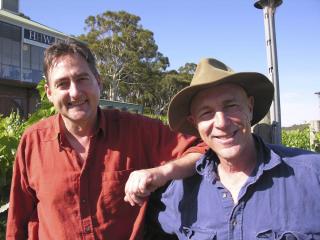 Marc Dobson and Larry Jacobs have planted grüner veltliner at Hahndorf Hill
Marc Dobson and Larry Jacobs have planted grüner veltliner at Hahndorf Hill
One of the aspects of the week that excited me most started with the first judge's dinner we had at The Locavore in Stirling on the Monday night. Someone had brought along two reds, one made from southern Italy's aglianico another from sagrantino. Admittedly made in Barossa, but they were both excellent. Then there were a couple of dry whites made from arneis, the north Italian variety, a carignan and a nebbiolo-cabernet blend. People started talking about vermentino, roussanne, savagnin (the grape fomerly known as albariño) and verdejo. And just that day, I had visited a vineyard planted with the Austrian variety blaufränkisch and trollinger and the same winery had just planted Austria's grüner veltliner. During the course of the judging, we tasted an exceptional arneis, a delicious savagnin and a beautifully made fiano. Then came the reds: nebbiolo, sangiovese and an eye opening tempranillo which would sit proudly next to some of the finest of Ribera del Duero and Rioja.
I think that you're getting my point. I'm not advocating rocking the boat here when so much effort has gone into choosing variety and site over the past 20 tears. My point is however that I was excited to see so many successful new wine styles bubbling under. Yes, you call them alternate or alternative varieties, which is a bit of a negative term and I think it would be good if someone with a marketing bent could come up with a more positive term for alternative varieties, like new for instance, or hold a consumer competition with a prize for the winning name. It brought home a point made by Andrew Jefford: 'Everyone I spoke to would like to see more risk-taking and adventure in both viticulture and winemaking from Australia'.
Marketing aside, what's clear is that there is huge potential for the Adelaide Hills to steer a new and authoritative path with the pioneering of these fascinating varieties from Italy, Spain, Austria and the lesser known parts of France. Yes, now may not be the best time to talk about new plantings. Yet everyone making them or thinking of doing so certainly needs all the encouragement they can get because it's always going to be a tough, long-term job to locate the right sites, make the wines and bring these new wines to market. But today's mainstream was yesterday's alternative variety and I salute those prepared to take a risk and I offer some of the encouragement they'll need to turn today's alternatives into tomorrow's mainstream.
The Adelaide Hills is fortunate in being a region that’s becoming increasingly respected thanks to the undoubted pursuit of quality by dedicated individuals in a vineyard area of a relatively manageable size. That’s a huge advantage and will stand it in good stead as the Australian regions become more clearly defined for what they do best, where and by whom. Next to Coonawarra and Barossa, the Hills may as yet be less well-known to most consumers in the UK, but while you can destroy an image overnight, it takes the commitment of time, energy and investment to build one, and it can only be a matter of time before the Hills is spoken of in the same breath in the UK and worldwide as the Barossa and Coonawarra; and why not Burgundy and the Rhône too?. The quality, diversity of style and innovation I've been seeing, backed up by a determination to get the message across, will stand the Adelaide Hills in very good stead as the regionality and sub-regionality map becomes more clearly defined. Thank you for listening and thank you for having me.
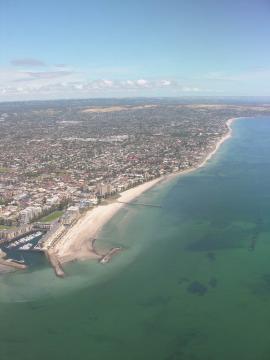 Goodbye, Adelaide
Goodbye, Adelaide

